Today I want to show you how to design a real time ML system that can predict crypto prices 5 minutes into the future, using
Python and Rust to build our micro-services.
Apache Kafka for real time data streaming
LLMs for sentiment extraction from unstructured data,
Kubernetes for a production-ready deployment
Let’s start!
Our goal 🎯
Let's build an ML system that can predict crypto prices 5 minutes into the future.
Attention 🚨
Predicting short-term crypto price movements is very hard.
If it wasn’t everyone would be rich. And, as far as I know, not everyone is rich.
I am not rich for example.
To predict this target we want to use ML, and for that we need reliable data sources that can help us generate the best predictions we can.
In this case we will use 2 real-time data streams
Crypto trade data
Market news about blockchain, or any economic factor that can possibly impact the target metric we want to predict.
System design 📐
Let's break down our system into 4 types pipelines
Feature pipelines (2 of them)
Training pipeline
Inference pipeline
Monitoring pipeline
Let's go one by one.
1. Feature Pipelines 💾
Our 2 feature pipelines transform raw data into reusable ML model features, and save them in our Feature Store.
Feature pipeline for technical indicators
Ingests market trades from a websocket API like Kraken or Binance,
Aggregates them into 1-minute windows
Engineers technical indicators to capture momentum in the market, and
Pushes them to the Feature Store
Feature pipeline for market sentiment
Scrapes news by pooling a website like coinbase,
Parses the raw text into a structure sentiment score using an LLM, and
Pushes them to the Feature Store
2. Training pipeline 🏋🏽
We can use a boosting tree model like XGBoost to uncover any patterns between the
current technical indicators, and
market senttiment
and
the price of BTC or ETH 5 minutes into the future (target metric)
The final model is pushed to the model registry, so it can be loaded by our next pipeline: the inference pipeline.
3. Inference pipeline 🔮
Finally, we need to generate and make fresh predictions accessible. This is what the inference pipeline does.
To serve the final predictions, while making them easily accessible to our next pipeline (the monitoring pipeline) I recommend you split this step into 2 services:
Prediction generator
Loads the model from the registry and
Continuously reads the latest features from the Feature Store,
Generate a new prediction and
Pushes this prediction into a DB, like an Elastic Search index.
Prediction API
This is a lightweight service that
Receives incoming requests from client apps,
Finds the predictions in the Elastic Search index, and
Returns the prediction to the client app.
Bonus 🎁
If latency is critical, you can build a websocket API, instead of a REST API, to avoid reading and writing to Elastic Search.
4. Monitoring pipeline 🔎
There are lots of things you can monitor here. The most fundamental one is the error of your predictions.
To monitor these you need to build a streaming service that
Listens to incoming price data
Loads the predictions from the DB
Computes the error and
Pushes the error into another Elastic Search index
These errors are plotted on a dashboard using Kibana, and trigger alerts to your Slack or Discord team.
BOOM!
Wanna build this system with me?
On December 2nd, 213 brave students and myself will start building this system, in my course Building a Real Time ML System. Together.
Live. You and me. Step by step.
It will take us at least 4 weeks, and 40 hours of live coding sessions, to go from idea to a fully working system, that we will deploy to Kubernetes.
Along the way you will learn
Universal MLOps design principles
Tons of Python tricks
Feature engineering in real time
LLMs engineer market signals from unstructured data
Some Rust magic
.. and more
Gift 🎁
As a subscriber to the Real World ML Newsletter you have exclusive access to a 40% discount. For a few hours you can access it at a special price.
Talk to you next week,
Wish you a great weekend,
Pau






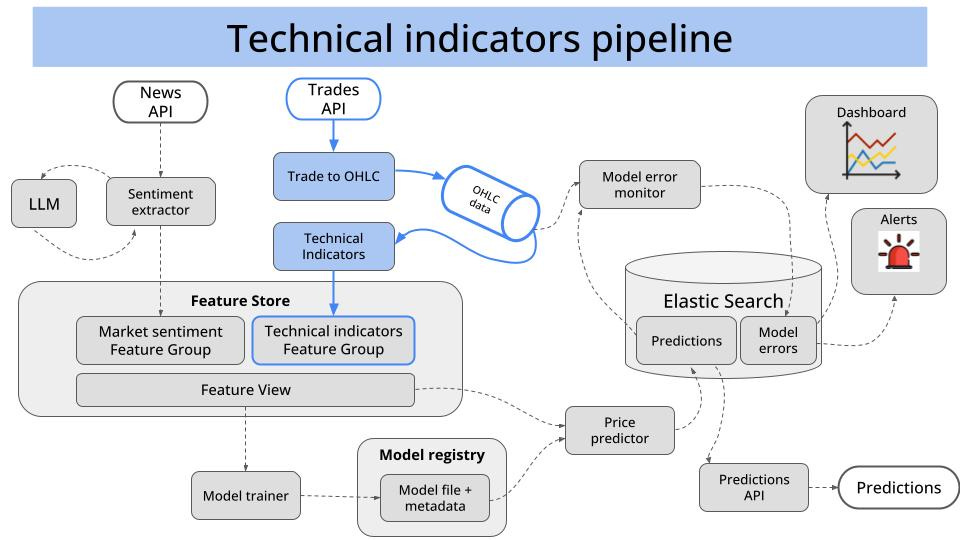
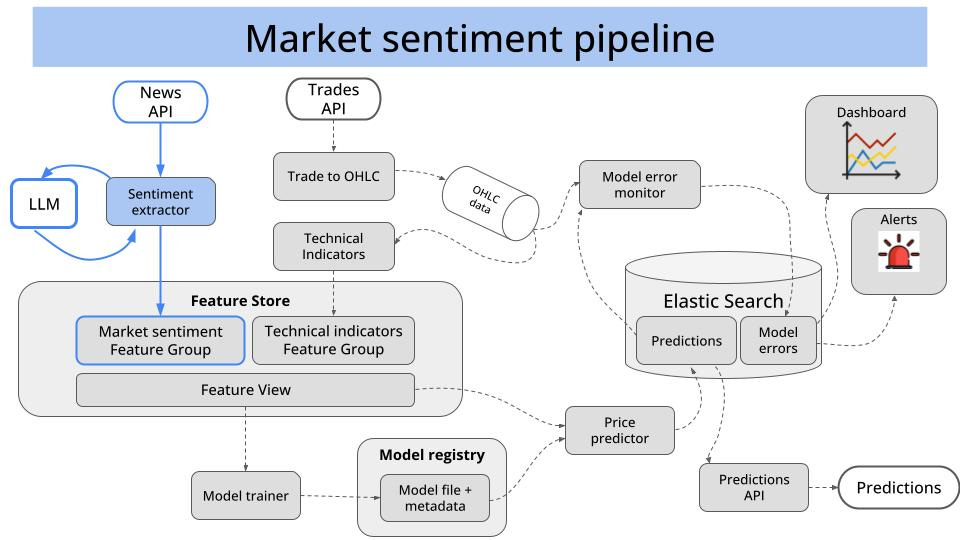
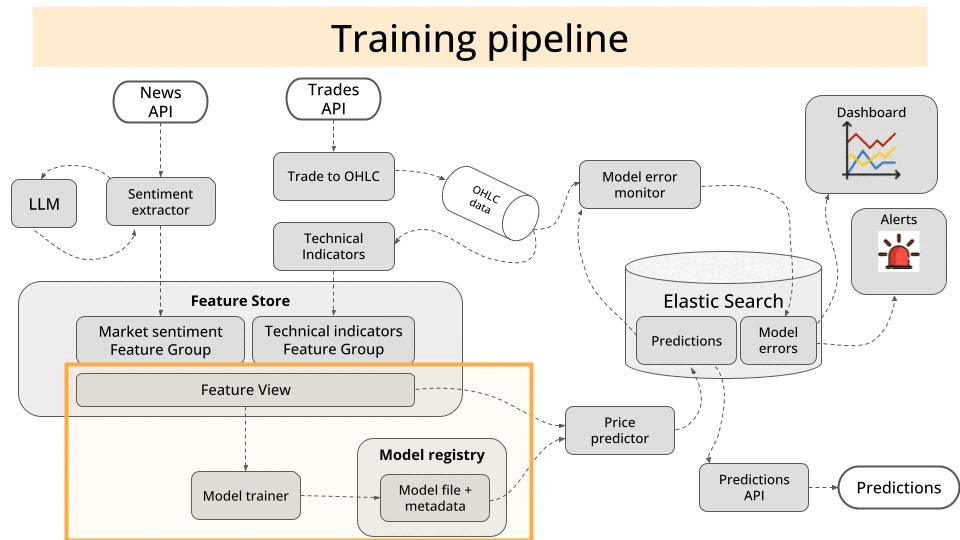
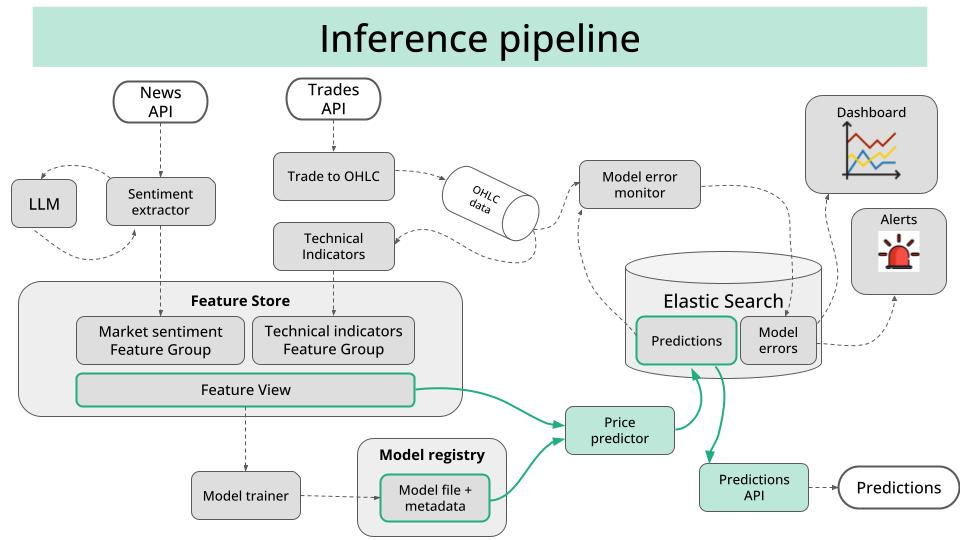


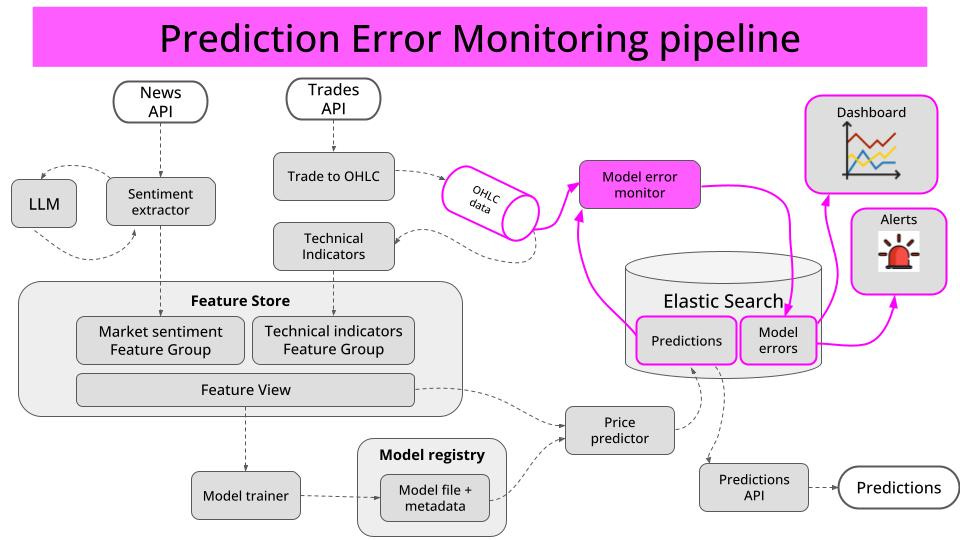

This is brilliant 😊🙌
Love the modular nature of your approach, makes it’s much clearer to comprehend